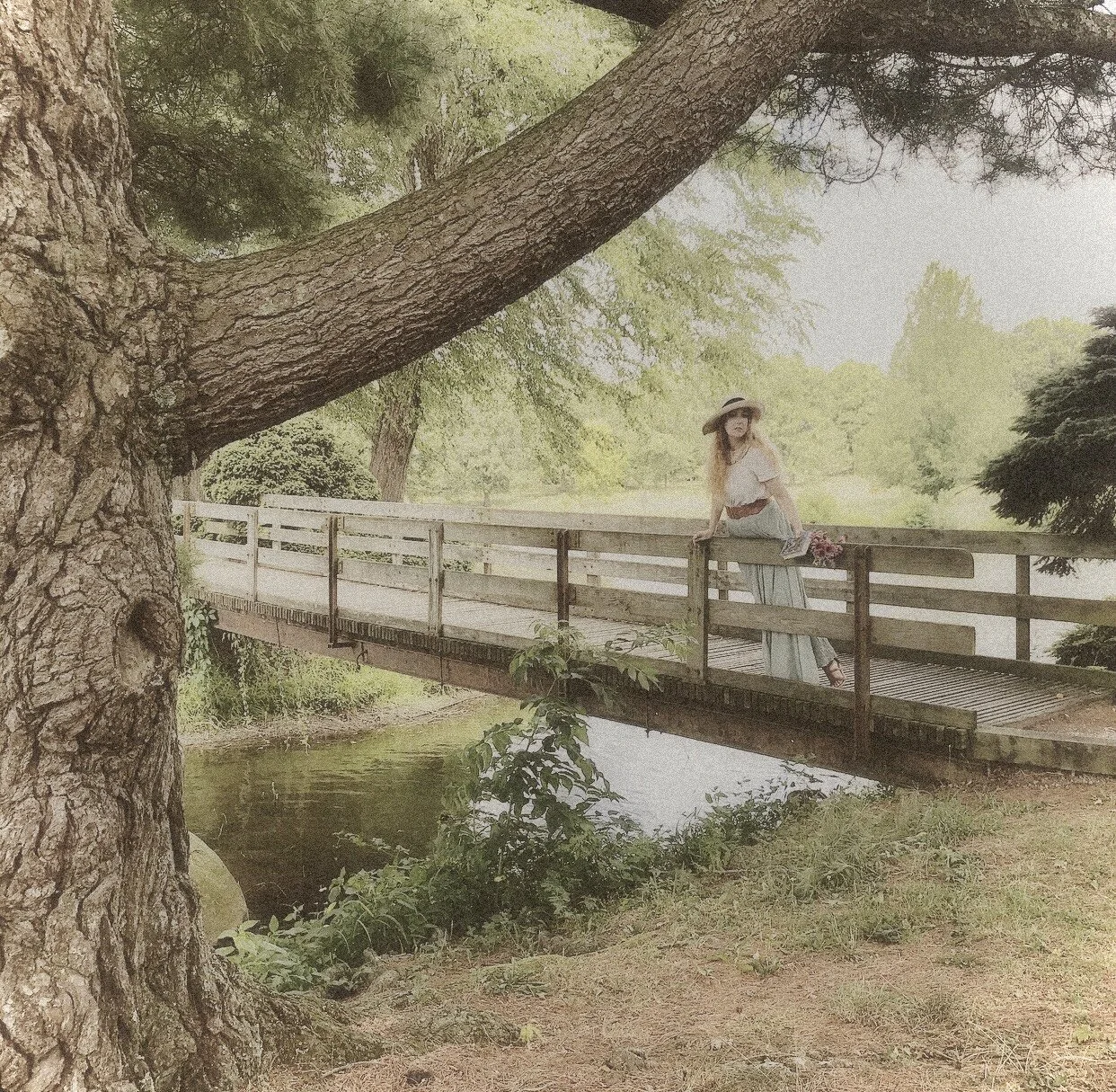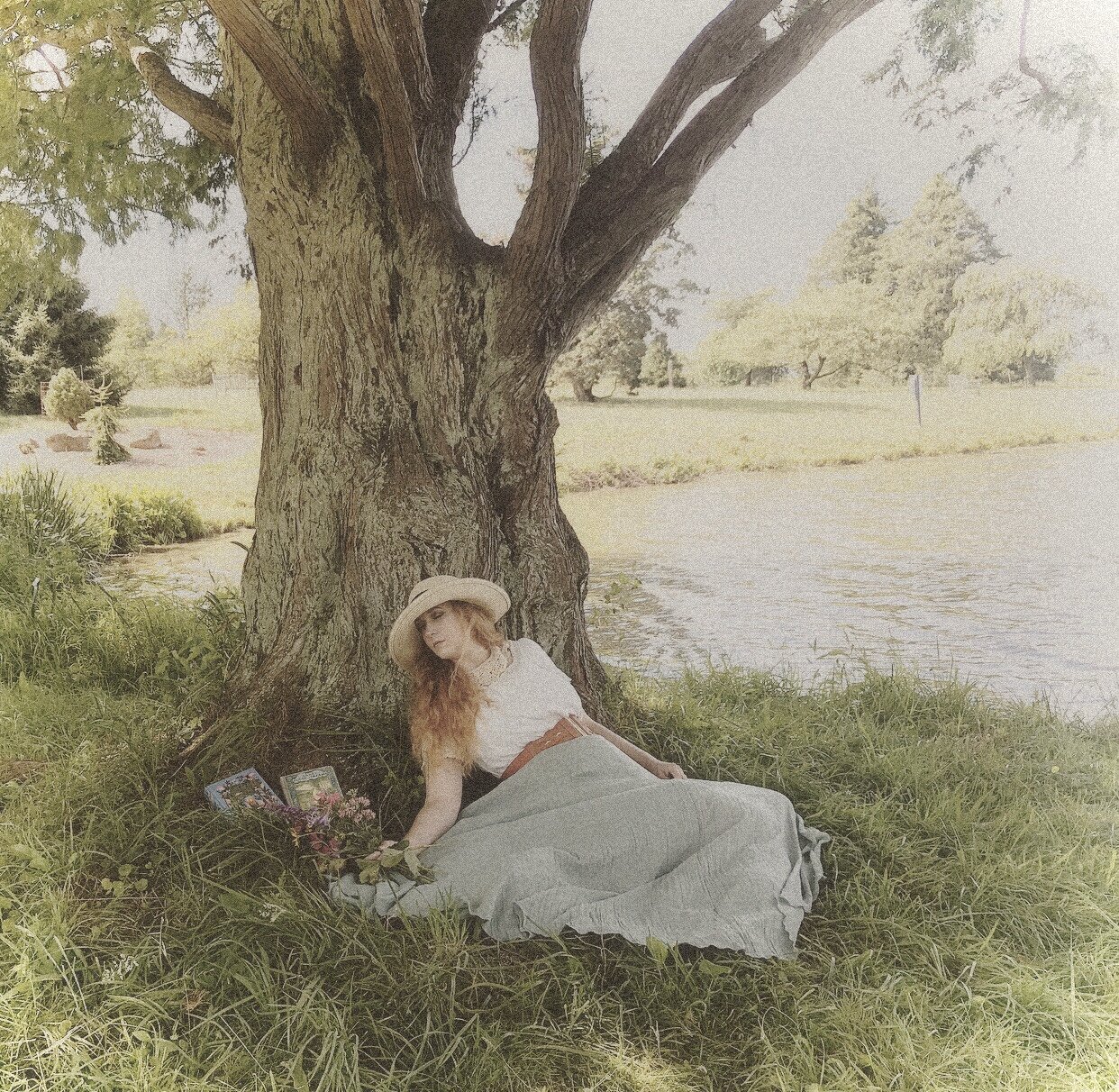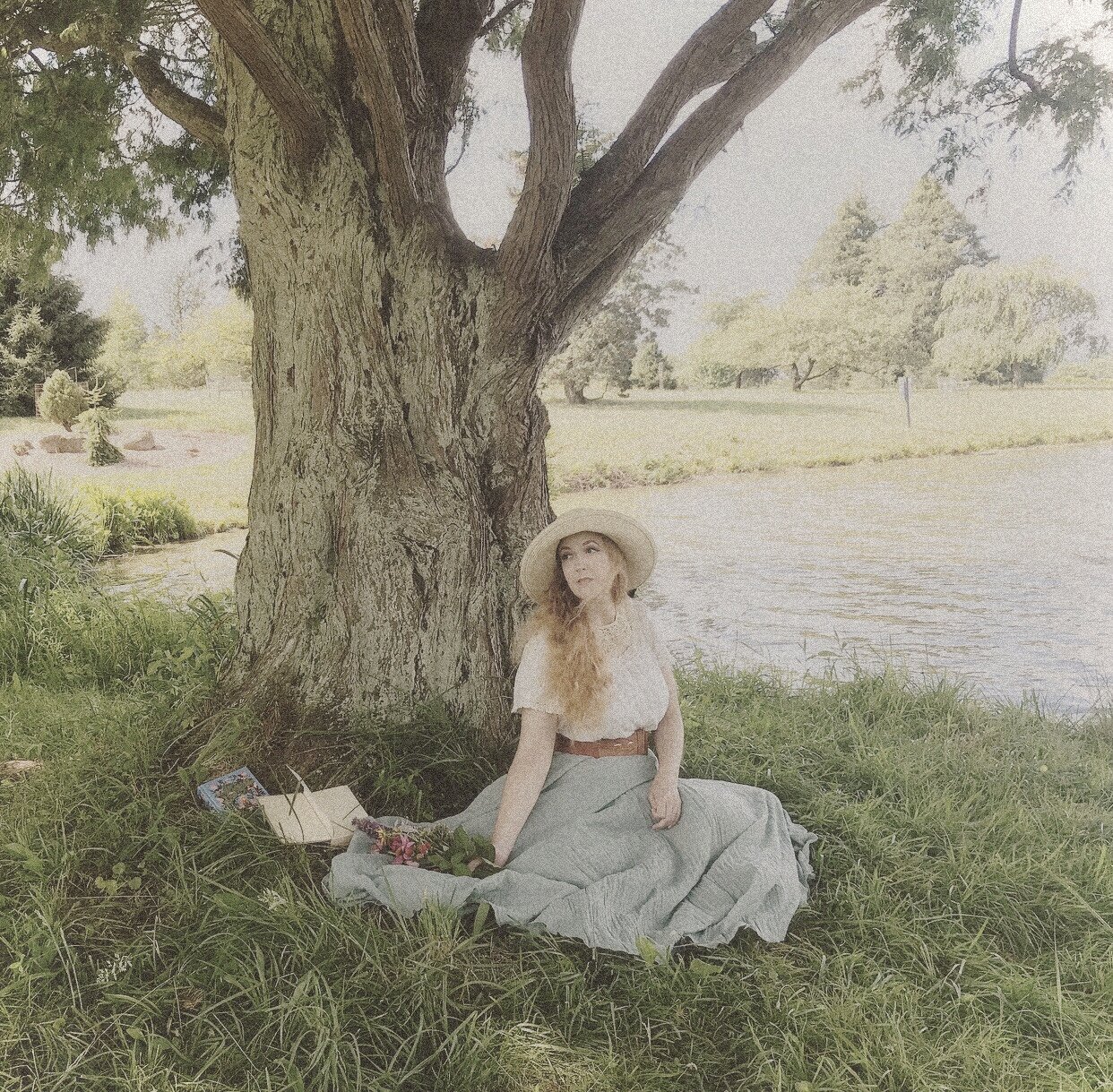The Hazy Dream of Autochrome Photography
/Carolyn Even Gledhill with Nasturiums, by Edwin Gledhill, ca 1920
Although I am obsessed with fairy tales, and though I love the fashion and romance of the medieval era, especially as seen through the lens of the 19th and early 20th century artists, if I had to hop into a time machine and go back to any era, it would be the Edwardian era. (Really, I would most rather stay here, where we’ve at least made some strides toward equality and have wonderful technology, and I can still wear fashion inspired by all the eras I love.) The first couple of decades of the 20th century so beautifully straddled the formality of the Victorians and their stunning fashions and artistry, and the advent of some modern conveniences we still enjoy today. The Great Depression was still so far off no one even could imagine it, and the idle rich entertained themselves through putting on whimsical and folkloric plays with intricate costumes, escaping to vacation homes by the water, and taking Autochrome photographs.
By Arnold Genthe.
Thomas Shields Clarke ca 1910
Autochrome was an early color photography method devised by the Lumiere brothers of France and patented in 1903. The process of the autochrome was complicated and expensive, from the taking of the photo, to the development of the resulting image, to the viewing and saving of the image, but the result was like no other form of photography before or since.
Dancers, Queens, Long Island, New York. ca 1915. By Karl Struss.
Thomas Shields Clarke (one of my very favorite autochromes)
This new form of photography required a long exposure in a well-lit location, so many of the photographs were taken outdoors. The photographer had to use a tripod, so the subject had to stay extremely still, and highly-posed, painterly-composed images were prevalent. The results were images that look more like the fine art of the Pre-Raphaelites or other Romantic painters than most candid black and white photos from the same era.
Thomas Shields Clarke
Vevey, Villa Claire, ca 1910.
Because of the expense of the equipment and the development process, (potato starch was tinted to different colors using a secret method, and then placed on the plate…millions of grains…to create the color image) the photography process became a novelty with the idle rich, who played with portraits in their lush gardens and wore whimsical costumes, posing family members as characters from stories. Beyond these amateur photos, however, a handful of truly-talented Autochrome photographers emerged and created a body of work that stands the test of time.
By Alphonse Van Besten.
Woman with a medieval headdress before a Gothic-looking fireplace. maker unknown, ca. 1910.
Woman in Satin Dress Holding Mirror, by George Eastman House, ca 1915.
Woman in Greenhouse, by Mrs. Benjamin F Russell, ca 1910.
John Cimon Warburg ca 1909
Once the Autochrome photograph was developed, the result was an extremely delicate glass plate. The best way to view an Autochrome safely was to use a viewer called a Diascope that allowed the light to project behind the plate indirectly so as to protect it. Theoretically, one could also view an Autochrome by holding it up to the light, but to do so could easily cause permanent damage to the image. This only adds to the ephemeral and magical charm of the Autochrome in my opinion. Like Faerie, it so easily disappears and must be treated with care and respect.
Mary Warner im Gegenlicht, by Heinrich Kuhn, ca 1908. (Doesn’t this look like the portrait of a very elegant witch?)
Florence Peterson by Paul Burty Haviland
Woman Posing in a Garden, by Paul Bergon, ca 1910.
Woman and Girl by a Brook, by Charles Corbet, ca 1910.
By Arnold Genthe.
The images produced with Autochrome technology were softly blurred, with a grainy (literally…potato…) texture, but oh, the light! The light absolutely glows in these photographs. Considering that the only way to view them was with light, they have a literal luminous quality. Author John Wood described it succinctly: “The autochrome is the rarest, the most fragile and, to a great many eyes, the most beautiful of photographic processes. It represents not just the birth of color photography but color as luminous as the camera ever caught it.”
Old Familiar Flowers, by Emma Barton ca 1919.
The Dryad by John Cimon Warburg, ca 1910.
Ethel Dietz Nichols sitting on a rock in garden. ca 1911.
Purity, by Alfonse Van Besten, ca 1913.
On a personal note, Autochrome has been hugely influential to me in the self-portrait photographs that I take. I was initially inspired in my modeling pursuits a decade ago by the paintings of the Pre-Raphaelites I had so loved since I was a teen. But when I started discovering and pinning inspiring antique images on Pinterest, and noticing that all of the photographs I loved from the Edwardian era had the word “Autochrome” in the description, I started seeking out these photographs more and more. And I was delighted and smitten. Here were direct inspirations for what I was trying to accomplish with my own photographic self-portraits…the capturing of a dream, a story, a captured transient and magical moment.
Although I have no ability to take an actual Autochrome portrait in 2020, I recently took a trip to the local arboretum to celebrate the importance of this photographic era in my own life, and take some Edwardian-themed photos by the lake. I used a photo editing program to try to approximate the look as closely as I could.
Thanks to the following articles for helping aid my research:
The Life and Times of Erin Smith.
and Pinterest!































